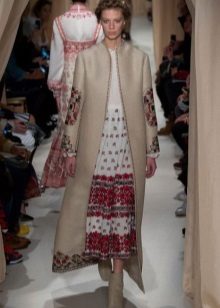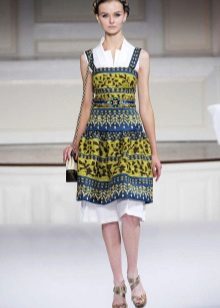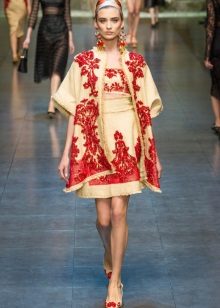In many countries, for example, in German Bavaria or Switzerland, a traditional folk costume is worn not only during national holidays or on stage, but also in ordinary life: at home, on the street, even at work. Recently, in post-Soviet society, a trend has begun to be traced to folk costumes, whether its elements, characteristic embroidery or interesting stylization.
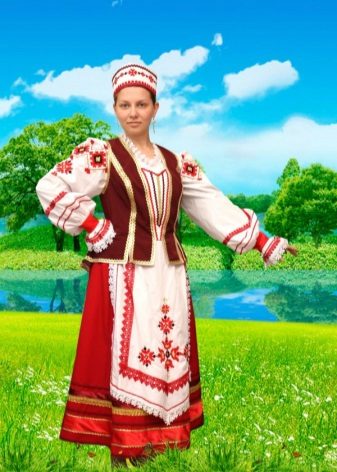
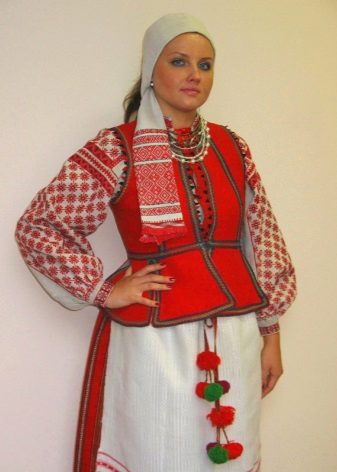
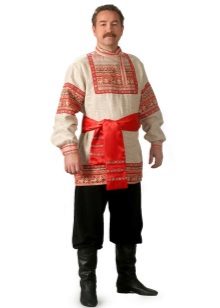
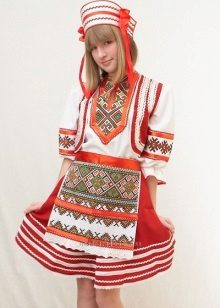
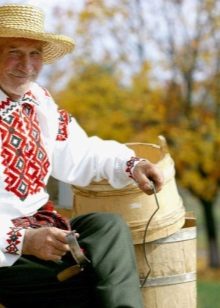
History
Folk costumes of any country are a direct reflection of its history. A traditional folk costume is not just clothes that you can put on as you wish, these are historical artifacts that, by studying them, you can come to a better understanding of the living conditions, cultural values, and ethnic characteristics of our ancestors.
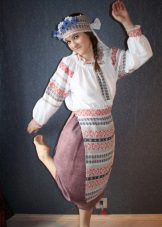
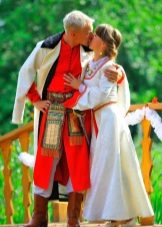
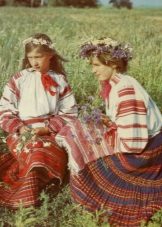

The first mention of the Belarusian folk costume appears at the beginning of the first half of the X century. They are quite fuzzy and have a fragmentary character, however, archaeological excavations made it possible to recreate the “system” itself, the ensemble of national clothes is also called and correlate the annals about the requirements of those times for male and female costumes in their various versions, depending on the person’s origin, its social status, type of activity, region (there are about 30 variations of the costume, correlated with a particular locality), place of residence (city or village), age, family differences.
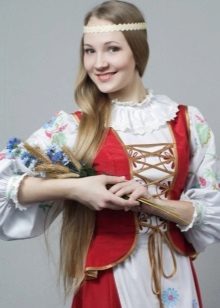
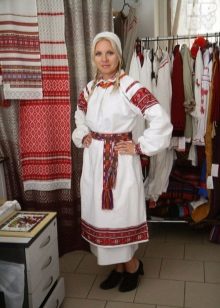
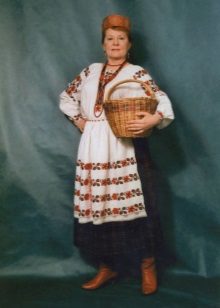
Finally, the classic look of the Belarusian traditional costume was fixed only at the beginning of the 20th century. It should also be borne in mind that the Belarusian national costume used by the townspeople not only differed from the rural version, but had characteristic signs of the pronounced influence of European fashion.That is why it is customary to consider the costume of a villager as a model of the national costume of Belarus, as preserving the features of genuine identity and self-identification.
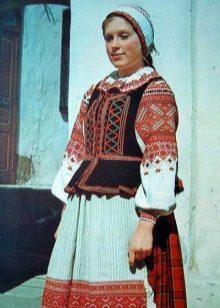
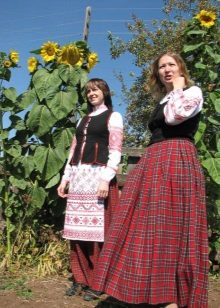
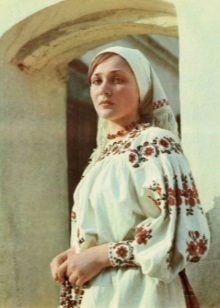
Features
The clothing complex of the Belarusian national costume arose in the Middle Ages far from us, gradually forming under the influence of several "neighboring" cultures: Russian, Ukrainian, Lithuanian, Polish, while preserving, however, the features inherent only to the Belarusian people: the dominant white color (due to which, as they say , Belarusians and received their ethnic name).
The decor is in the form of stripes, a complex multi-species ornament that has characteristic features in each of the six regions of Belarus, which, in turn, were divided into specific areas, which also contributed to the formation of the identity of the national costume.


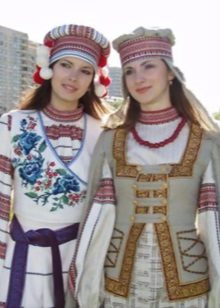
A characteristic element of clothing decoration was bright embroidery, in which geometric patterns prevailed, and then firmly entered into everyday life and floral motifs. As a rule, red yarn was bought for embroidery, sometimes specially tinted to achieve richer and deeper shades. In some cases, for example, to embroider the head patterns and in the presence of the proper wealth of the owner, silver or gold threads were used.
The ornamental pattern, as it were, passed from one piece of clothing to another, thereby creating a single composition.
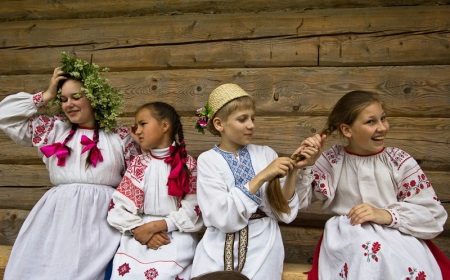
Varieties
The national costume of Belarus, like any other national dress, has a clear division into casual and festive, male and female, pre-wedding and after-wedding.
The men's casual suit included an outfit shirt, a hem and a collar that was decorated with embroidery, belted with a bright belt; Ports (one or two, depending on the solvency of the owner); kamizelki (vest); Braverki (single-breasted jacket with a braid sewn from cloth). In cold weather, again, depending on consistency, either a cloth epancha was worn, or a sheepskin sheepskin coat (sheathed in fabric with embroideries), or a fur coat (an indicator of the owner's great wealth). The headdress in the summer was a bryl - a wide-brimmed straw hat, in the winter - a fur ablauha (a hat to which four parts were sewn, two of which were tied at the top, and two under the chin).
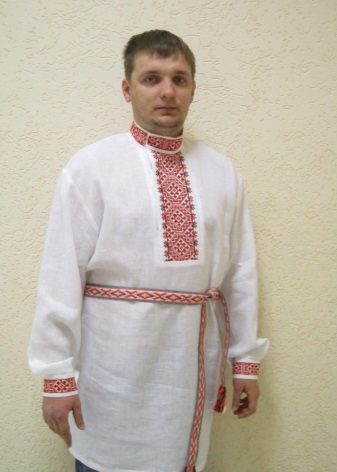
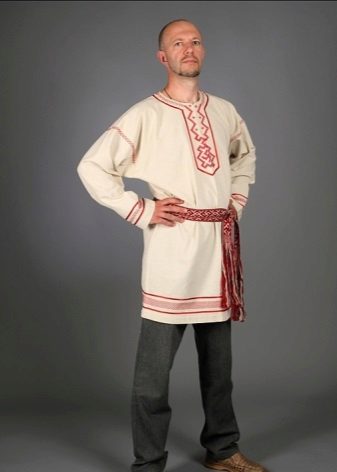
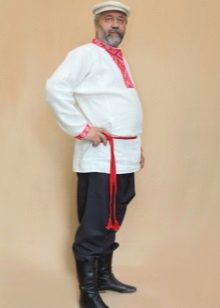
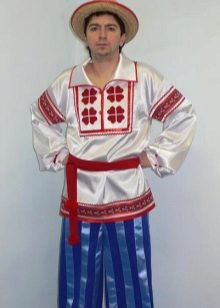
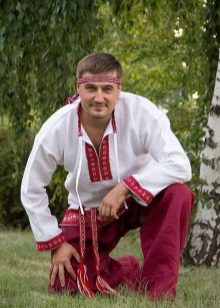
Shoes - bast shoes (bast, hemp, made of twigs), hems (shoes made of leather), wore felt boots in the winter, which were sewn with felt fabric or leather.
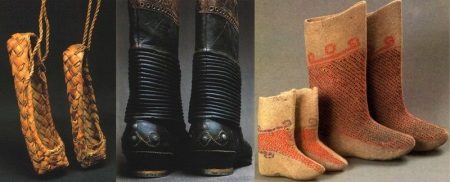
Women's clothing, even casual, had a significantly larger number of different options: cough - a white shirt with embroidery (there were three types of cough, differing in cut), spadnitsa - skirt (several types, differing in fabric (felt, wool), cover (andarak, poneva, summer, sayan), color, pattern (red, green-blue, checkered, striped), an apron (which was an obligatory part of the wardrobe), a garset - a vest made of chintz fabric, velvet, and for wealthy women - made of brocade (also decorated with luxurious embroidery, beads, multi-colored braid, appliques).
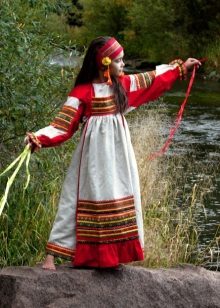


The outer clothing of women, despite the similarity of cut with the man's, was nevertheless more elegant: woolen scrolls and sheepskin coats. Women's headdresses were also diverse - the girls were supposed to have wreaths or multi-colored ribbons, while the crown remained uncovered. Married persons were obliged to put their hair under a cap, over which a scarf or curl was tied (basting). In some regions, one could also see a kitschka - a horny female headdress, characteristic of most Slavic peoples.
Women's shoes were not much different from men's shoes - bast shoes, charaviks (leather shoes), boots, boots.
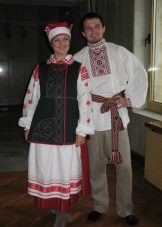

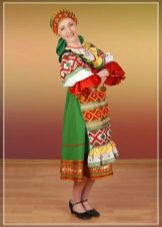

Holiday: this type of national costume differed from everyday only in brightness, splendor of decorative embroidery, thinner and richer fabrics used for sewing, and choice of shoes - if the opportunity allowed,then on holidays instead of bast shoes they wore leather shoes. A variety of elegant accessories were added to the women's costume during the holidays: rings, bracelets, pendants, glass beads, temples (an analogue of modern earrings), belt buckles, brooches (fasteners).
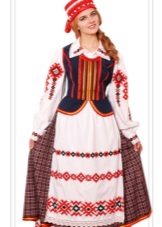
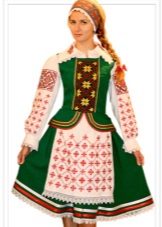
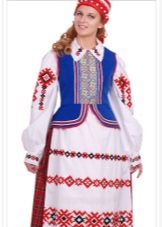
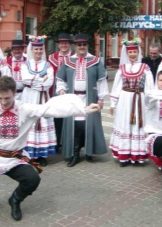
Clothing for girls and boys practically did not differ from the clothes of adults, except for some details. For example, a girl who put on an apron for the first time was considered a girl, and a girl who replaced a girl’s wreath with a wedding dress was considered a woman.
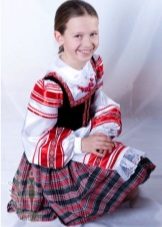
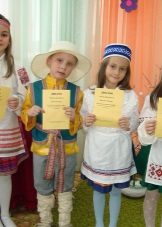

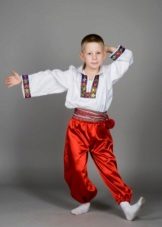
Items
An important feature of the Belarusian ethnic costume is that it belongs to the so-called waist suit. Elements of the traditional ensemble of clothing of the residents of Belarus - men's belt and women's apron, indispensable attributes of male and female costumes, respectively, that embody deep symbolism - in addition to utilitarian, practical functions (due to the lack of pockets in clothes, a handbag and all the things needed in the household were attached , and to the belt of a female apron - keys and various trifles), they have a ceremonial, protective value.
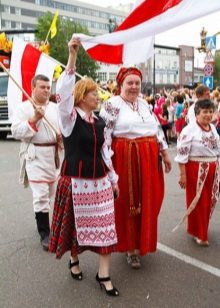
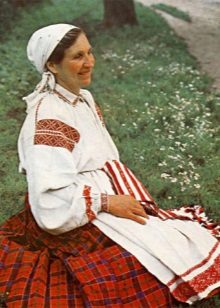
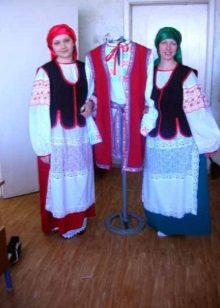
While in the warm season, almost the entire population of the village walked barefootmaking an exception only for holidays, it was absolutely unthinkable for a man to leave the house without a belt. Even the absence of a headdress could be, with difficulty, but justified, the absence of a belt of excuses was not and threatened with ridicule and even shame. The female apron had the same value - an additional amulet of the female bosom.
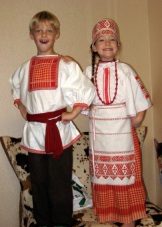
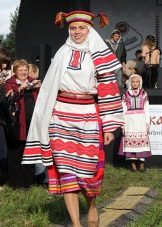
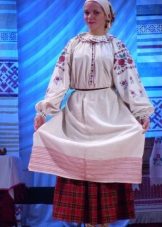
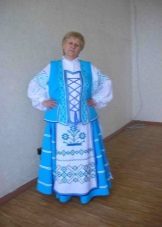
Silk was used to make the men's belt, this woven article of clothing cost a lot and was the pride of the owner. Women's apron trimmed with lace, embroidery, decorated with folds.
A striking distinctive feature of the female Belarusian costume is the winding - a headdress that marks the formation of a girl by a woman in a wedding ceremony. The winding, first wound on the bride’s head, like a modern veil, kept life and was put on the head of the deceased a second time.
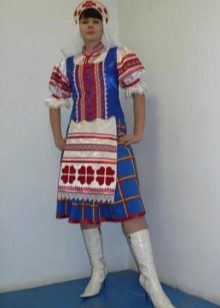
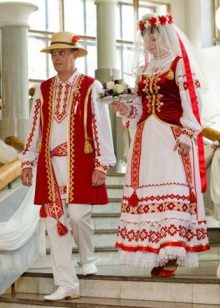
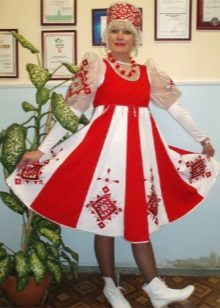
This old Belarusian headpiece was a long piece of fabric, which wound over a light wooden hoop worn over the head. Despite its simplicity, women managed to tie the winding in a variety of ways, characteristic not only for each region, but even for each village. The coils were sewn of thin expensive fabrics and decorated with lace, rich embroidery.
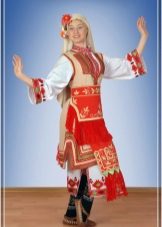
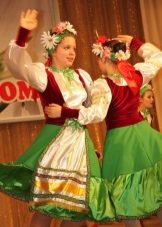
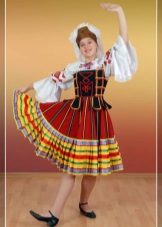
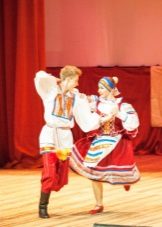
the cloth
As a fabric for sewing clothes, available natural materials were used.: flax, called the candle of God, wool, sometimes hemp. In the manufacture of warm clothing options, sheepskin and dense cloth were used. Dyes also had a natural origin: infusions of various types of herbs, tree bark, swamp ore.
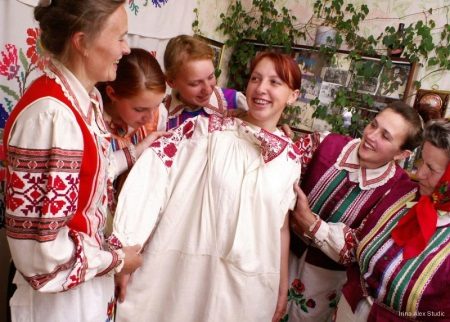
The images
- Decorated with bright traditional embroidery, the shirt looks very stylish and can be worn with a skirt or jeans for a simple but effective look in the style of ethnic casual.
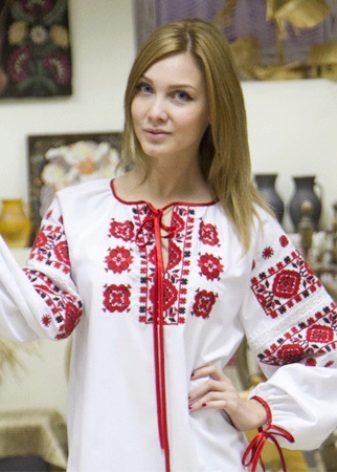
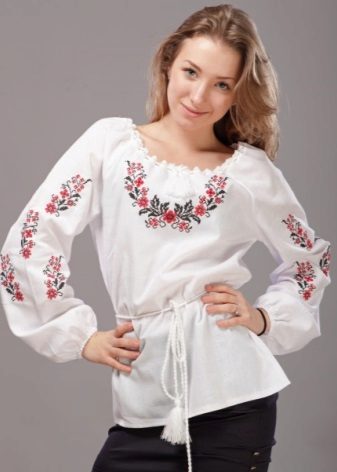
- In a dress decorated with luxurious embroidery in the national Belarusian style, any woman will undoubtedly be in the spotlight.
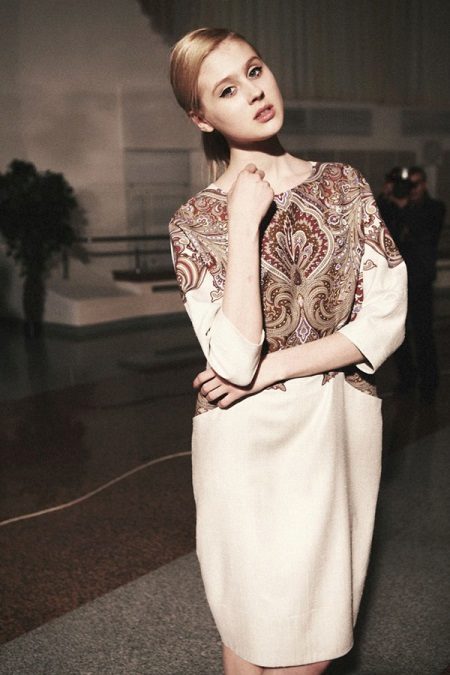
- A t-shirt with an ethnic ornament, which is suitable for both a young man and a girl, deserves attention.
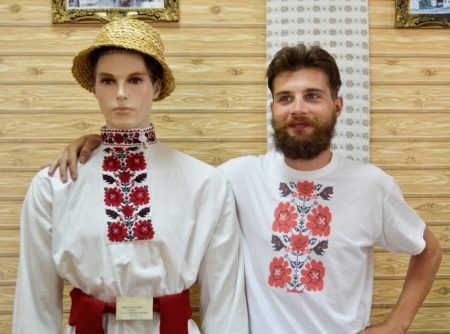
- Variants of the national ornament on children's things look great - bright, attractive and original.
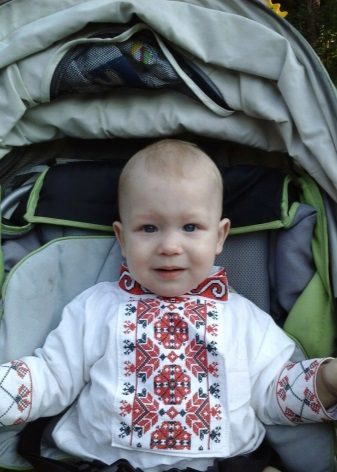

- The trends of traditional or successfully stylized wedding dresses in the Belarusian style are gaining more and more popularity.
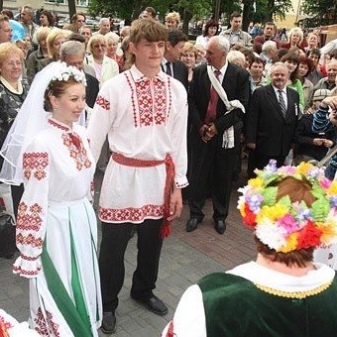
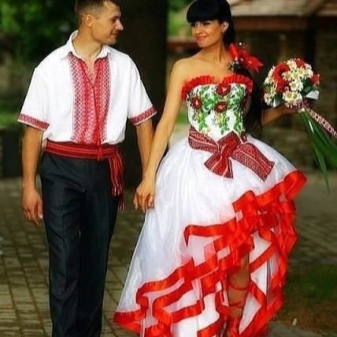
- Elements and motives of the Belarusian national costume are of great interest on world catwalks.
